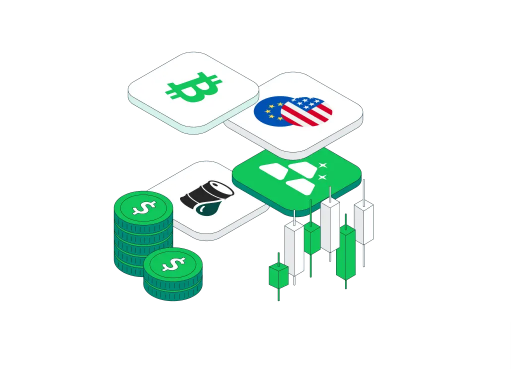The global market for trading currencies has an incredible daily trading volume of more than $7.5 trillion. It is an electrifying opportunity for traders everywhere. But at the same time, forex trading carries an array of risks. One of these risks is more closely associated with forex trading than anything else: using leverage too liberally. Leverage is a used word in trading that refers to the amount of money a trader can actually control in a position versus the amount of money they actually have to use. Leverage makes using the forex market potentially much more profitable.
Using leverage to achieve trading profits can also lead to severe losses. While many traders have had success using leverage, countless others have suffered devastating account losses that well exceed their initial investment amounts. Leverage is often thought of as a way to use money "rented" from a broker to trade a larger position than would otherwise be possible. When trading, many traders also think of achieving profits as a way of building an even larger account base that they can trade from.

What is Leverage? Understanding the Basics
Using leverage in forex trading can help you control much larger positions than your actual account balance would normally allow. You're using borrowed capital from your broker to do this, and when you leverage your trading account, you really boost not just your trading power but also your potential returns.
The controlled capital and margin stand in an inverse relationship. High leverage leads to a demand for low margin, yet it boosts profit and loss potential. Take it at 1:100 leverage; it means a 1% price movement in my favor could yield a 100% return on my margin, with the opposite (1% unfavorable movement in price) possibly wiping out my entire margin.
Risks of Overexposure Due to Excessive Leverage
Using too much leverage can create a perilous trading atmosphere; even slight changes in the market can result in dire losses. The main risk comes from forced liquidation, which is when brokers close down positions automatically because the margin has fallen below necessary levels.
Against overleveraged traders, the mathematics of leverage work ruthlessly. A leverage level of 1:500 means that for every 500 units in a position, only 1 unit of equity backs it. Thus, the adverse price movement needed to trigger a margin call is a scant 0.2%. But if an account is down 0.5% on a position, it is toast: the position is getting liquidated.
How to Use Leverage Responsibly to Avoid Overexposure
Using leverage responsibly starts with an honest self-assessment of your risk tolerance and trading experience. Controlling the risk of using leverage means having clear parameters in place before entering any trade, and making sure that potential losses stay within your comfort zone under any market condition.
The basis of responsible leverage lies in the 1-2% rule: never stake more than 1-2% of your entire account balance on one trade. This principle, when yoked with appropriate leverage selection, creates a safety buffer that can absorb several consecutive losses without putting the account in any real danger.
Tradewill Platform's Leverage and Risk Management Features
The Tradewill options provide risk management capabilities that are flexible and designed to protect traders from being overexposed while allowing them to maximize their trading opportunities. On the platform, leverage ratios range from a conservative 1:10 to an aggressive 1:500, and traders can select levels that are appropriate for them based on their experience and risk tolerances.
The intelligent leverage adjustment mechanism on the platform allows for real-time modifications depending on the state of the market and the performance of an account. This dynamic method helps traders stay at, or very close to, optimal risk exposure. It does not call for anything like complex position size calculations on the part of the account holders.
Conclusion:
This extensive manual has served to demonstrate how having leverage can act as a means of accelerating opportunity growth and a way of intensifying risk. It has required close attention to act as a reminder of the kind of good things that can come from having leverage and the kind of bad things that can happen when we have it and don't manage it carefully.
Keep in mind that leverage is not about getting the most profit from every single trade. It's about using your capital efficiently and maintaining sustainable risk levels. The traders who thrive and survive in leveraged markets focus on consistency, risk management, and long-term capital preservation. They are not primarily focused on short-term profit maximization. And there's good reason for that.
For more info:-
forex trading demo account
best currency trading app